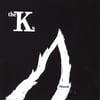 "The largest of these flutes can be found on the island of Kur-kurret, far from the shipping lanes in the South Sea. The specimen that the flute came from has been calculated to have been between 400 and 500 feet long, depending on the age at the time of extraction. The flute itself is well over 70 feet long. Core samples of the bone walls have been inconclusive as there is heavy scarring and nodular growth throughout, indicative of a systemic arthropathy which no doubt left the massive creature in near-constant agony.
"The largest of these flutes can be found on the island of Kur-kurret, far from the shipping lanes in the South Sea. The specimen that the flute came from has been calculated to have been between 400 and 500 feet long, depending on the age at the time of extraction. The flute itself is well over 70 feet long. Core samples of the bone walls have been inconclusive as there is heavy scarring and nodular growth throughout, indicative of a systemic arthropathy which no doubt left the massive creature in near-constant agony.It is no surprise then that the local history of the flute's origin includes tales of a "great wyrmm of the Sea," and of fishing vessels being capsized and all hands consumed by a "serpent most dyre in its cryes and loathsome of countenance." Such behavior could be explained by a painful condition such as evidenced by the bone fragments that have been studied by other fellows at the Institute. It may also be that the smaller specimens more commonly encountered are not as aggressive simply because of their small (relatively speaking, of course) size.
The Kur-kurret histories indicate that the flute was extracted from the beached carcass of the tubefish approximately 350 years ago. The local patriarch of the fishing tribe that dominated the island had the flute dragged to his hillside retreat (no mean feat, as the object's weight has been estimated at 12 tons -- heavier than might be expected due to the predominance of solid ossifications in the otherwise porous medium), where it was incorporated into local religious festivals.
Interestingly there is evidence that smaller tubefish flutes were treated with no great respect, having been found alongside the typical array of beads and wooden toys in common gravesites of children euthanized during the last century's polio epidemic. This runs contrary to many accounts of similar cultures revering even the smallest examples of tubefish flutes. Further study of this phenomenon is warranted but is not covered in the scope of this inquiry.
The Kur-kurret flute has been maintained in active religious use through to the present day. Should in-situ analysis be undertaken, field personnel are advised to prepare for primitive conditions and frequent storms, particularly in monsoon season. Political instability in the region is another concern, although recent improvements in relations with the South Sea Archipelago naval oligarchy have mollified this concern to some extent. Equipment recommendations for use in tropical regions can be found in Appendix C. . . ."
Professor Van Hoek slammed shut the concordance. Roebling was likely already steaming for Kur-kurret with a cargo ship purpose-built for the journey. If he was to have any chance of making an objective study of the thing he'd have to move with utmost speed. He uncapped a speaking tube and yelled into it, "Reynolds! Dr. Morse! Meet me on the bridge!"
Within minutes the nose of the Silver Tulip was turning through light clouds as the airship headed toward the South Sea, trailing a thin streamer of black coalsmoke.
--Steve Kilian
------------------------------- The Polar Turtle
------------------------------- Tips For Landing A Job





No comments:
Post a Comment